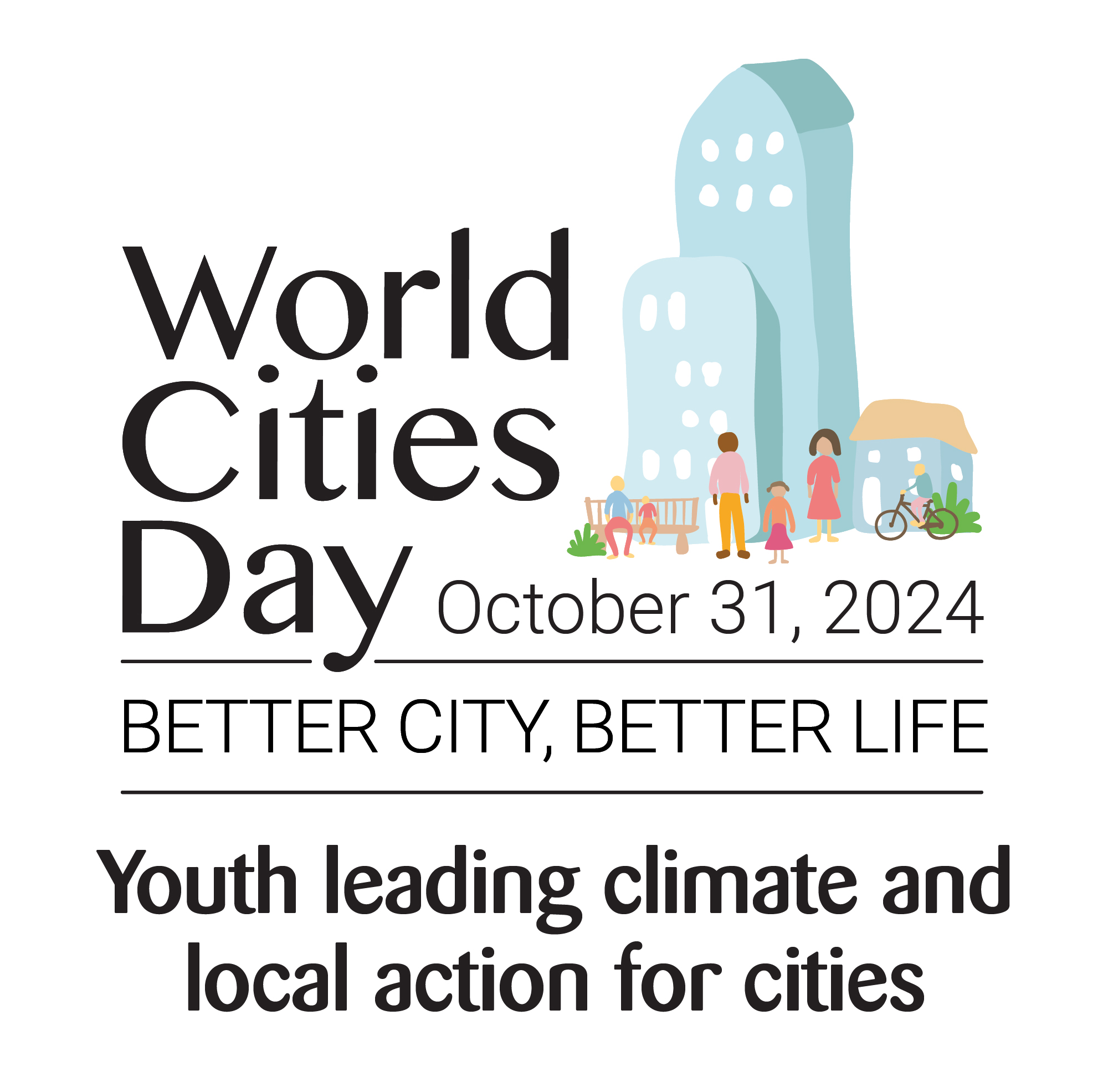World Cities Day
The 31st of October is celebrated as World Cities Day. The aim is to promote the international community’s interest in global urbanization, enhance cooperation among countries and cities in meeting opportunities and addressing challenges of urbanization, and contribute to sustainable urban development. The overall World Cities Day theme is Better City, Better Life.
As an outcome of the Shanghai International Expo 2010, the United Nations General Assembly in its resolution 68/239 of 27 December 2013, designated every 31 October as World Cities Day.
World Cities Day 2024
 On 31 October 2024, the Global Observance of World Cities Day, will be under the theme Youth leading climate and local action for cities. Young people advocate for bolder steps and actions to tackle climate crisis in our cities. It will draw attention on how we can capture these bold ideas and ambitious targets and turn them into achievements.
On 31 October 2024, the Global Observance of World Cities Day, will be under the theme Youth leading climate and local action for cities. Young people advocate for bolder steps and actions to tackle climate crisis in our cities. It will draw attention on how we can capture these bold ideas and ambitious targets and turn them into achievements.
With urban areas projected to accommodate 70 per cent of the global population by 2050, cities face unprecedented challenges, particularly in the context of climate change. In cities worldwide, youth represent a significant demographic, with their voices and actions pivotal in shaping urban futures. It has been estimated that 60 percent of the world’s population will live in cities by 2030 and that as many as 60 percent of urban dwellers will be under the age of 18. Despite progress towards the SDGs, urban areas continue to grapple with poverty, inequality, and environmental degradation, necessitating urgent and
transformative actions.
Engaging youth meaningfully in urban decision-making processes is essential for fostering inclusive and resilient cities. By empowering and enabling young people to participate actively, cities can tap into their creativity, innovation, and commitment to drive sustainable development. Moreover, involving youth in policymaking ensures that urban strategies reflect their aspirations and concerns, leading to more effective and equitable future.
Key messages
- With nearly 70% of the world’s population living in cities by 2050, the future of humanity is urban.
- In most countries, local and regional governments are responsible for coordinating and delivering basic services, which are critical for ensuring communities’ wellbeing and development.
- The 2030 Agenda for Sustainable Development and its 17 goals offer the best framework to address the world’s most pressing challenges. More than the 65% of the SDG targets are related to the work and mandate of local governments.
- Local action and local leadership are critical to addressing the current global crises and to foster sustainable recovery and development.
- The success to address the current and future challenges and to redirect our world towards more sustainable paths will depend on increased capacities of local and regional governments.
Urban resilience
With over half of the population living in urban areas and the numbers increasing daily, cities are facing unprecedented demographic, environmental, economic, social and spatial challenges. Cities are centres of innovation and investment and are pivotal for economic growth and development. At the same time, cities are vulnerable to severe impacts from a range of challenges, shocks and stresses that can be both natural and human made
Urban Resilience is the measurable ability of any urban system, with its inhabitants, to maintain continuity through all shocks and stresses, while positively adapting and transforming toward sustainability. A Resilient City assesses, plans and acts to prepare and respond to hazards - natural and human-made, sudden and slow-onset, expected and unexpected - in order to protect and enhance people’s live, secure development gains, foster an environment for investment, and drive positive change.
Major challenges to resilience include economic, environmental, cultural, civic and disaster mitigation and recovery.
Characteristics of a Resilient City
- Persistent : A persistent city anticipates impacts in order to prepare for current and future shocks and stresses. It builds robustness by incorporating coping mechanisms to withstand disturbances and protect people and assets. It encourages redundancy in its networks by generating spare capacity and back-ups to maintain and restore basic services, ensuring reliability during and after disruption.
- Adaptable : An adaptable city considers not only foreseeable risks, but also accepts current and future uncertainty. It diversifies its services, functions and processes by establishing alternatives and is resourceful in its capacity to repurpose human, financial and physical capital. It is flexible and can absorb, adjust and evolve in the face of changing circumstances, dynamically responding by turning change into opportunity.
- Inclusive : An inclusive city centres on people by understanding that being resilient entails protecting each person from any negative impact. Recognising that people in vulnerable situations are among the most affected by hazards, it actively strives towards social inclusion by promoting equality, equity and fulfilment of human rights. It fosters social cohesion and empowers comprehensive and meaningful participation in all governance processes in order to develop resilient city.
Source : UN
Last Modified : 10/5/2024
this page contains information about the renewable...
This topic provides information about World Habita...
This topic provides information about the National...
